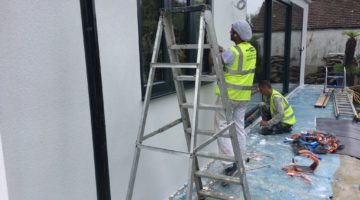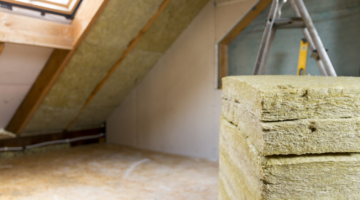
UPDATE: As of 30 March 2016, the government has stopped funding and the Green Deal Home Improvement Fund is closed to new applications. You can read about it here.
Funding mechanisms
There are three ways to fund energy efficiency improvements – through self finance, ECO grants and the Green Deal mechanism. ECO provides money to help those on low incomes and with hard to treat properties. Green Deal loans are available to everyone to make improvements, but do have an interest rate on the repayments.
Why is The Green Deal a good idea for those self financing?
So you want to improve your insulation, get a new boiler, or maybe some new windows, but you don’t want to take out a loan – maybe you have the money to hand and would rather just pay for it outright.
Fair enough. Despite the advantages Green Deal financing has, it is usually going to be cheaper to pay for everything up front. The question you may be asking then, is why get a Green Deal Assessment if you are intending to finance from your own pocket. There are plenty of reasons, and in this blog I want to go through some of the key things you should bear in mind here.
Firstly, a Green Deal Assessment is more than just a finance package. It offers an extensive and unbiased appraisal of the property’s efficiency. There really is no better way of getting an unbiased appraisal of your energy efficiency.
You will be getting advice from an advisor who has seen hundreds of properties, knows what are the best improvements to make in your situation, and give you personalised advice. That’s something you can’t get from a Google search. The advisor will also offer advice on other practical things you can do to save energy, even without making big installations. And remember, you are under no obligation to have any measures installed via the Green Deal. You can have an assessment and get nothing installed, or get the work done privately (though you will not get any Green Deal funding this way).
Let’s put ourselves in a typical customers shoes and run through a few scenarios. These are all examples of typical customers, that we see on a daily basis:
Example 1
NO ASSESSMENT – The customer wants to improve their home and is keen to get a new boiler. They go and buy a boiler and start using it and notice a small improvement in efficiency.
COST: £3,000 SAVINGS: 150£/year PAYBACK: 20 years
ASSESSMENT – an assessor may come and notice that, although getting a new boiler is a good idea, it would be equally important to get thermostatic valves fitted, as several rooms don’t need to be heated as much during the winter. They opt to go for a Green Deal because there is £270 of cashback from the boiler and £70 from the valves. The customer ends up saving twice as much than if they had blindly gone into the installation.
COST: £2,960 SAVINGS: 300£/year PAYBACK: 10 years
Example 2
NO ASSESSMENT – The customer wants solid wall insulation as they hear it is a big energy saver. They pay £10,000 and get it installed.
COST: £10,000 SAVINGS: 250£/year PAYBACK: 40 years
ASSESSMENT – The customer gets an assessment and finds out they can get an ECO grant for £5,000 and that there is some cashback available for going with the Green Deal. They don’t need to take out a loan, as they pay for the rest of the cost themselves. But they end up paying around £4,350 in total.
COST: £4,350 SAVINGS: 250£/year PAYBACK: 17.5 years
Example 3
NO ASSESSMENT – The customer decides to get new double glazing – they know it won’t be a big energy saver, but they already have loft insulation and a new boiler, so what else is left to do?
COST: £8,000 SAVINGS: 100£/year PAYBACK: 80 years
ASSESSMENT – The green deal assessor notices that the doors are not draught proofed, and there are several open chimneys that have not been blocked, even though they aren’t being used. The windows also only have flimsy blinds and recommends that curtains would help keep the room warmer. The savings made from these suggestions are equal to that of new double glazing and the difference in cost is huge – the draught proofing would cost £200 and the windows £8,000. The customer decides not to bother with the windows now.
COST: £200 SAVINGS: 100£/year PAYBACK: 2 years
Example 4
NO ASSESSMENT – A customer wants to reduce their energy bills. They have plenty of insulation, so think that there is nothing they can do. It’s just those mean energy companies hiking their prices again.
ASSESSMENT – The assessor finds that the customer is overheating their house to 24 degrees. By cutting down to 21 the customer saves £200 a year. The assessor also looks at the customers bills, and finds they are on a particularly inappropriate tariff. They talk them through a USwitch search and save the customer another £200 a year. The customer can now afford that holiday they were trying to budget for.
These are just a few examples and there are many more. As assessors we see the majority of customers benefiting from an assessment, even if they don’t get any Green Deal measures. They end up learning a lot more about energy efficiency and can then make much more informed decisions about where to go next.












Can I get financial help for under floor insulation – suspended wooden floor? I’m a pensioner?
Hi Sonia, if you are on Pension Credit they you are entitled to get financial support on a new boiler, loft and cavity wall insulation.
See here please for more info: http://www.thegreenage.co.uk/can-i-still-get-a-grant-for-a-free-boiler/, http://www.thegreenage.co.uk/can-i-get-cavity-wall-insulation-for-free/
Unfortunately there is broader based grant system for floor insulation because it’s not considered a ‘cost effective’ measure. What this means is that to insulate the floors of a house would be in excess of £1000s but the economic payback through bill savings is not considered as good as loft and wall insulation. You can go with the Green Deal, which means you can benefit from the cashback and Green Deal Finance. However I would question the need for floor insulation and have it professionally draught proofed instead as heat rises and very little escapes through the floors. Hope this is of some help.